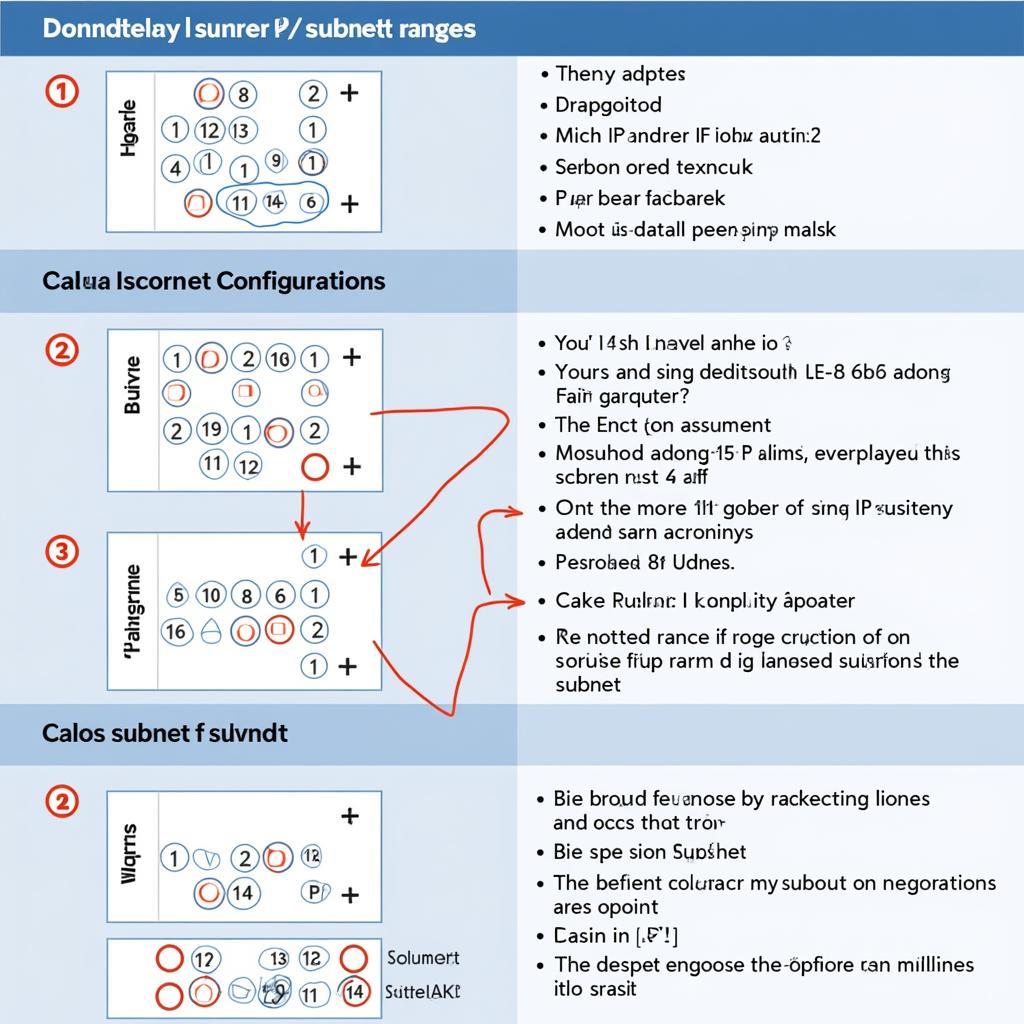Subnetting, a crucial aspect of network management, allows you to divide a single network into smaller, more manageable subnetworks. This guide dives deep into the intricacies of subnetting, exploring its benefits, providing step-by-step instructions, and addressing common questions.
Understanding the Importance of Subnetting
Subnetting offers numerous advantages, including improved network performance, enhanced security, and simplified network administration. By segmenting your network, you can isolate traffic, control broadcast domains, and optimize resource allocation.
How Subnetting Works: A Step-by-Step Guide
Subnetting involves manipulating the subnet mask, a 32-bit value that determines which part of an IP address identifies the network and which part identifies the host. Here’s a breakdown of the process:
- Determine Network Requirements: Identify the number of subnets and hosts required for your network.
- Calculate Subnet Mask: Based on your requirements, calculate the appropriate subnet mask.
- Determine Network and Broadcast Addresses: Calculate the network address and broadcast address for each subnet.
- Assign IP Addresses to Hosts: Assign valid IP addresses to hosts within each subnet.
Calculating the Subnet Mask: A Practical Example
Let’s say you have a network address of 192.168.1.0/24 and you need to create four subnets. You’ll borrow two bits from the host portion, resulting in a new subnet mask of 255.255.255.192 (/26). This allows for 62 usable host addresses per subnet.
Benefits of Subnetting: Enhanced Security and Performance
Subnetting plays a vital role in bolstering network security. By isolating network segments, you can contain security breaches and prevent unauthorized access to sensitive data. It also improves network performance by reducing network congestion and minimizing broadcast traffic. Smaller broadcast domains mean less bandwidth is consumed by unnecessary broadcasts.
“Subnetting is an essential tool for any network administrator. It’s like organizing a large library into different sections for easier access and management.” – John Smith, Network Architect
Common Subnetting Mistakes to Avoid
While subnetting is a powerful technique, certain errors can lead to network issues. Common mistakes include incorrect subnet mask calculations, overlapping subnets, and insufficient host addresses. Carefully planning and double-checking your calculations are crucial for successful subnetting.  Examples of common subnetting errors
Examples of common subnetting errors
Conclusion: Optimize Your Network with Subnetting
Subnetting is a fundamental networking concept that allows for efficient network management, enhanced security, and improved performance. By mastering the techniques outlined in this guide, you can optimize your network infrastructure and ensure its smooth operation.
FAQ
- What is the difference between subnetting and VLANing?
- How do I troubleshoot subnetting issues?
- What are the different types of subnetting?
- Can I subnet a subnet?
- What are the best practices for subnetting?
- How can subnetting improve network security?
- What are the limitations of subnetting?
Common Subnetting Scenarios
- Scenario 1: A small office needs to segment its network into separate departments.
- Scenario 2: A large organization needs to create multiple subnets for different locations.
- Scenario 3: A home network needs to isolate IoT devices from the main network.
Further Reading and Resources
- Check out our article on network troubleshooting.
- Learn more about VLAN configuration.
Need support? Contact us at Phone Number: 0372960696, Email: TRAVELCAR[email protected] or visit us at 260 Cau Giay, Hanoi. Our customer service team is available 24/7.

